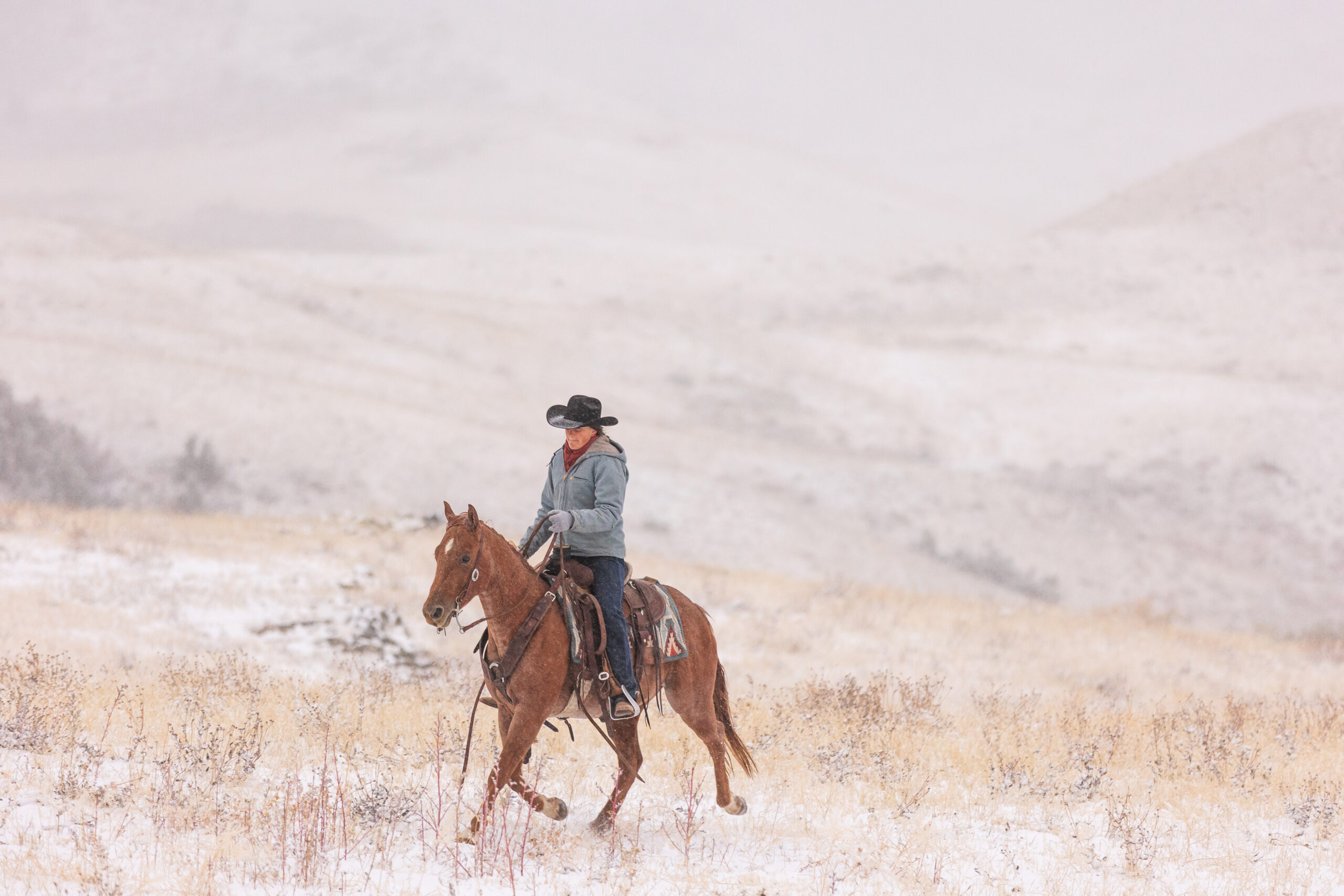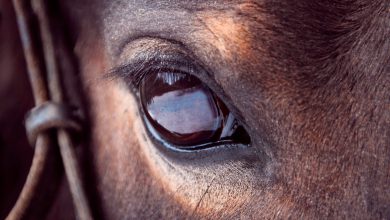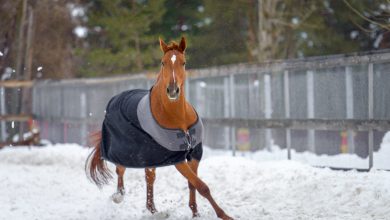
If your winter riding schedule demands you venture out in any weather, make sure you and your riding buddies stay warm and healthy. Frostbite (damage to the skin caused by cold) and hypothermia (when your body loses heat faster than it’s produced) can set in when temperatures are as high as 40 degrees Fahrenheit. And riding at a trot or lope/canter for any length of time can create skin-freezing wind chill.
If your face or other exposed skin (such as hands or wrists) feels numb or waxy, stop and take shelter. Also, to watch your riding buddies for signs of frostbite, stop every 10 to 15 minutes to warm up with a hand-warmer or small blanket. Examine their faces for white or yellowish spots – a telltale sign of frostbite. (Tip: Metal jewelry, clasps, and glasses will freeze before your skin does. Keep any metal away from your skin to avoid frostbite.)

Here are 5 other tips to mitigate cold weather risks:
- Dress Appropriately: Wear layers of warm clothing and choose moisture-wicking materials as a base layer to keep dry. Avoid tight-fitting clothing that restricts circulation. Protect your extremities with insulated gloves, hats, and warm socks.
- Protect Your Horse’s Extremities: Ensure your horse’s legs are properly protected with appropriate leg wraps or boots to prevent frostbite. Consider using snow pads for shod horses to prevent snow and ice buildup.
- Limit Exposure to Cold and Wet Conditions: Avoid riding in extreme weather conditions, especially when there is a combination of wind, precipitation, and cold temperatures. If the weather is severe, it’s best to reschedule your ride or find an alternative exercise routine.
- Regularly Inspect for Signs of Frostbite: Conduct daily inspections, paying close attention to your extremities. Look for signs of redness, swelling, or discoloration.
- Provide Shelter and Protection: Ensure your horse has access to suitable shelter during breaks or when not in use. This helps protect them from harsh weather conditions and reduce the risk of frostbite.



